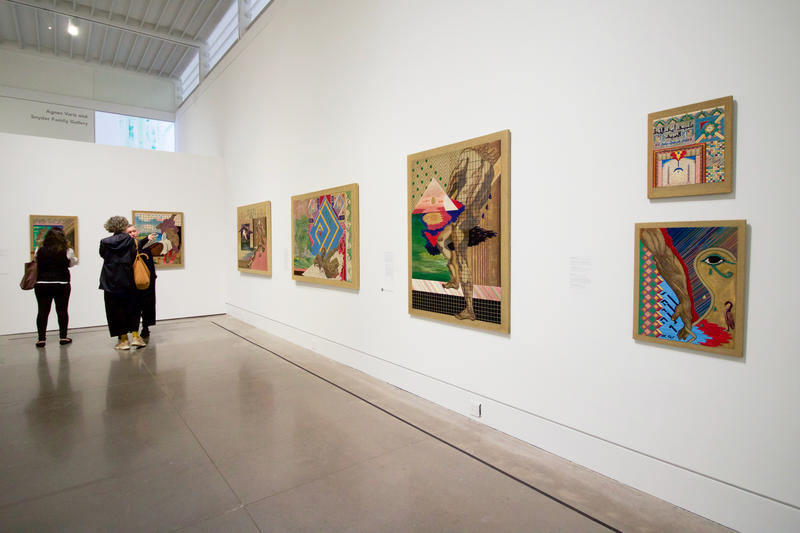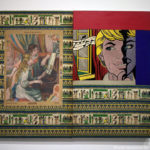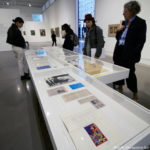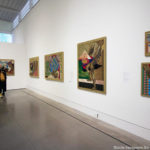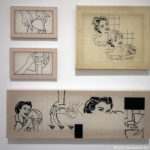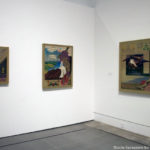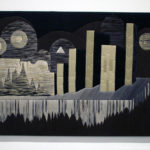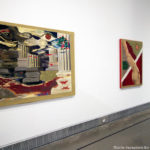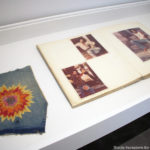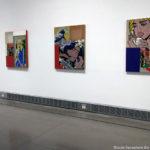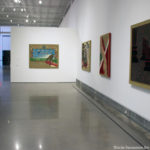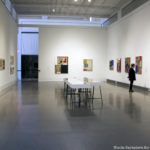Spider-man swinging on his web, Santa Claus hauling a sack over his shoulder, Arabic writing, ancient Greek symbols, and recreations of famous paintings are all visuals that are interwoven in the intricate tapestries of Lebanese artist Nicolas Moufarrege. A retrospective of Moufarrege’s work is now on view at the Queens Museum in the exhibition Recognize My Sign. This exhibition is the late artist’s first solo exhibition in New York City in more than thirty years. Recognize My Signs explores Moufarrege’s work as he travels internationally from Beirut to Paris, and ultimately to New York’s East Village in the 1980s.
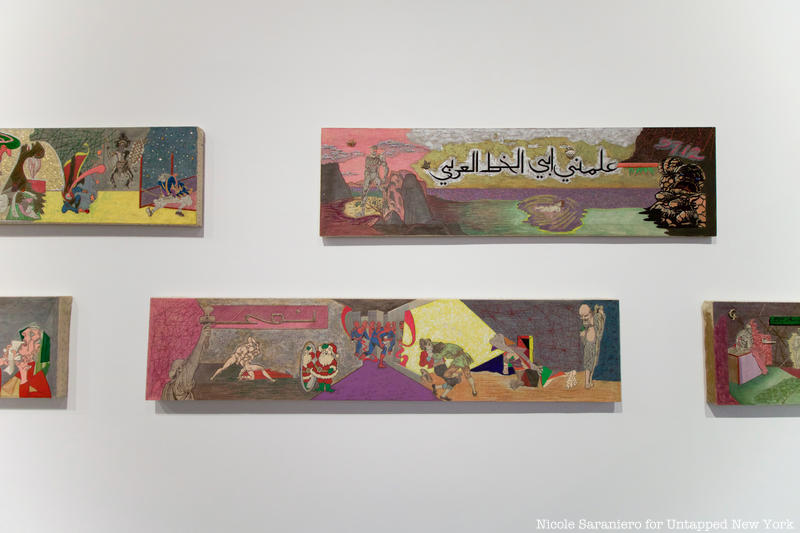
The exhibition starts with early pieces from Moufarrege’s time in Beirut. Born in Egypt in 1947 to Lebanese parents, Moufarrege went to Beirut to study. He earned two degrees in chemistry and went on to study in America on a Fullbright scholarship. In America, he shifted his focus from science to the arts. Moufarrege returned to Beirut where his career kicked off with a solo exhibition in 1973. The exhibition featured portrait tapestries created with a method he referred to as “experimental weaving.” Using cotton, wool, and silk in a variety of vibrant colors, he wove intricate and immensely textured scenes. In 1975, the onset of the Lebanese Civil War forced Mourfarrege to relocate to Paris.
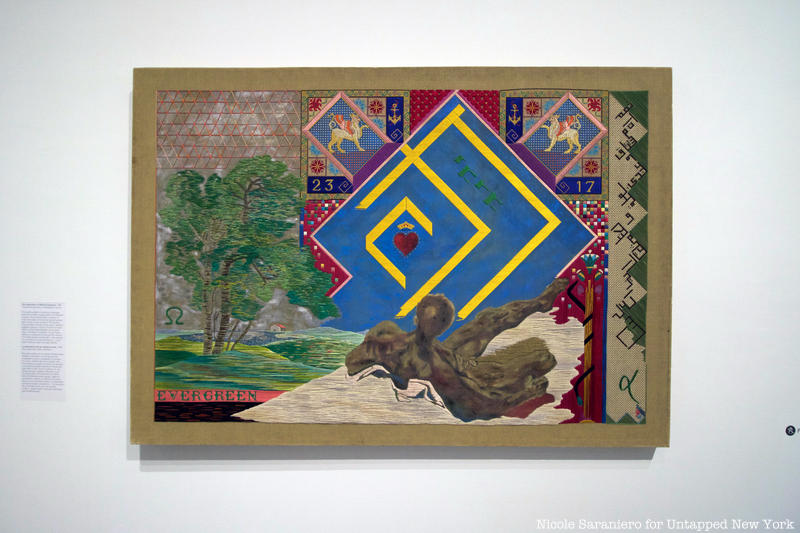
In Paris, Moufarrege’s artistic work flourished. His works became larger, more detailed, and more diverse. He began to mix elements in surprising ways. He would use embroidery and painting together in one piece. The content would be a blend of visual motifs and symbols from both Eastern and Western traditions. It’s not uncommon to see Greek Alpha and Omega symbols in the same scene as a quote written in Arabic calligraphy, all set against the backdrop of a scene inspired by a 17th-century French painter. Moufarrege’s work is riddled with coded symbols and messages that reflect his heritage and his identity as a gay man. While most of the messages and symbols have been figured out, there are still some references that remain a mystery. For example, no one has figured out yet what the numbers 23 and 17 refer to in his tapestry titled The Importance of Being Evergreen.
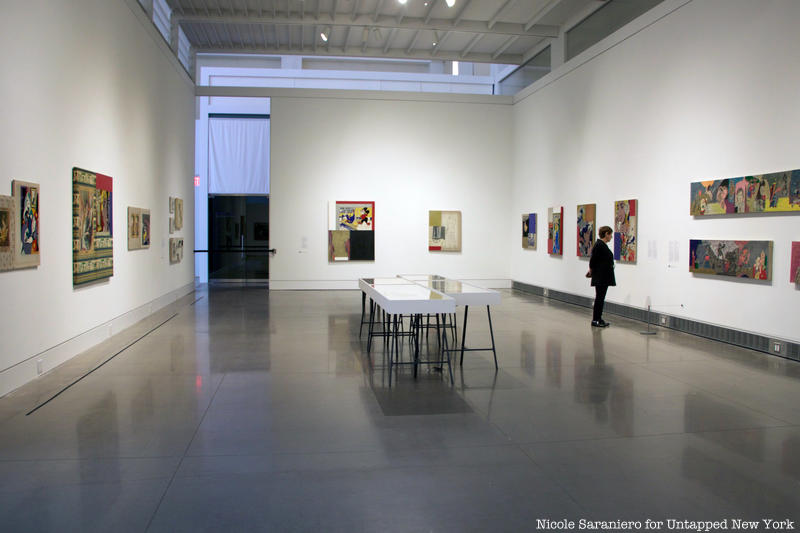
In addition to mixing Eastern and Western art, when Mourfarrege moved to New York, he also mixed high and low culture. His art made references to Pop culture figures like Spider-man, Santa Claus, and Mickey Mouse, as well as classical works of European art. His tapestries fuse seemingly disparate images. Moufarrege often recreated famous contemporary and historic paintings with thread. In many pieces, he mixed the elements of Roy Lichenstein’s work with others, such as Hokusai’s Great Wave or Edvard Munch’sThe Scream.
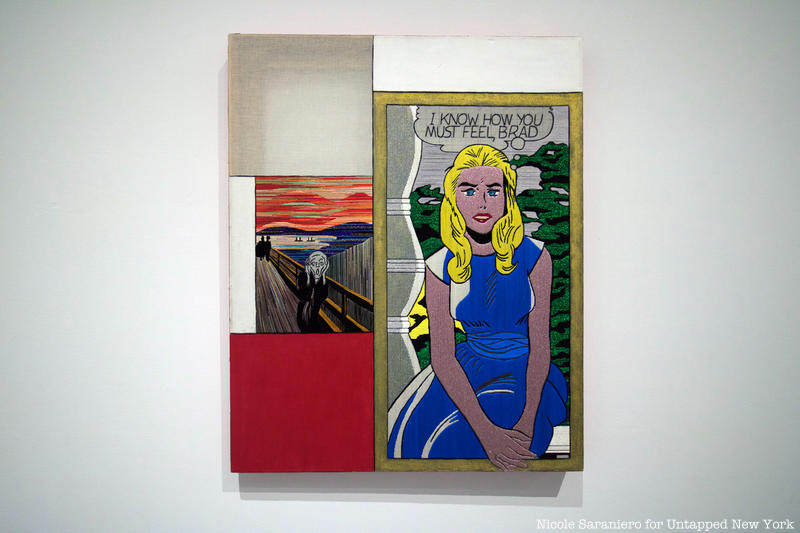
Moufarrege was fully immersed in the East Village art scene of the 1980s. Along with showing his work at galleries in the area, he also wrote about them in popular New York publications. This help to draw attention to the work of his artistic contemporaries. Moufarrege passed away at the young age of 37 due to AIDs-related complications in 1985. Recognize My Sign brings together 40 tapestries and embroidered paintings, as well as drawings, photographs, and primary documents that carry on his legacy. The exhibition, like the artist himself, is complex and colorful and spans the entire length of his prolific career. Check out more photos from the exhibition below:
Next, check out other exhibitions currently on view at the Queens Museum: Go on a Futuristic NYPD Ride Along at the Queens Museum, Explore the Zany Art of Rube Goldberg at the Queens Museum, and Sit on a Pile of Jeans in New Interactive Queens Museum Exhibit






